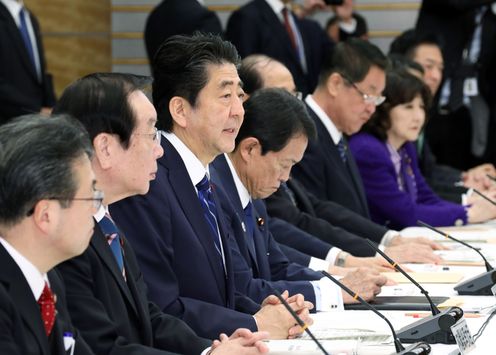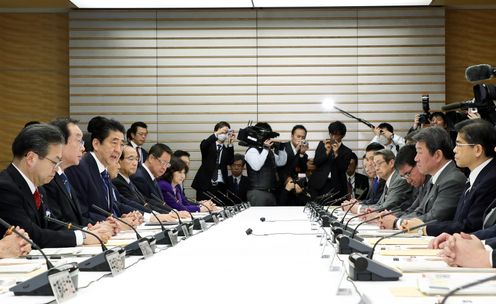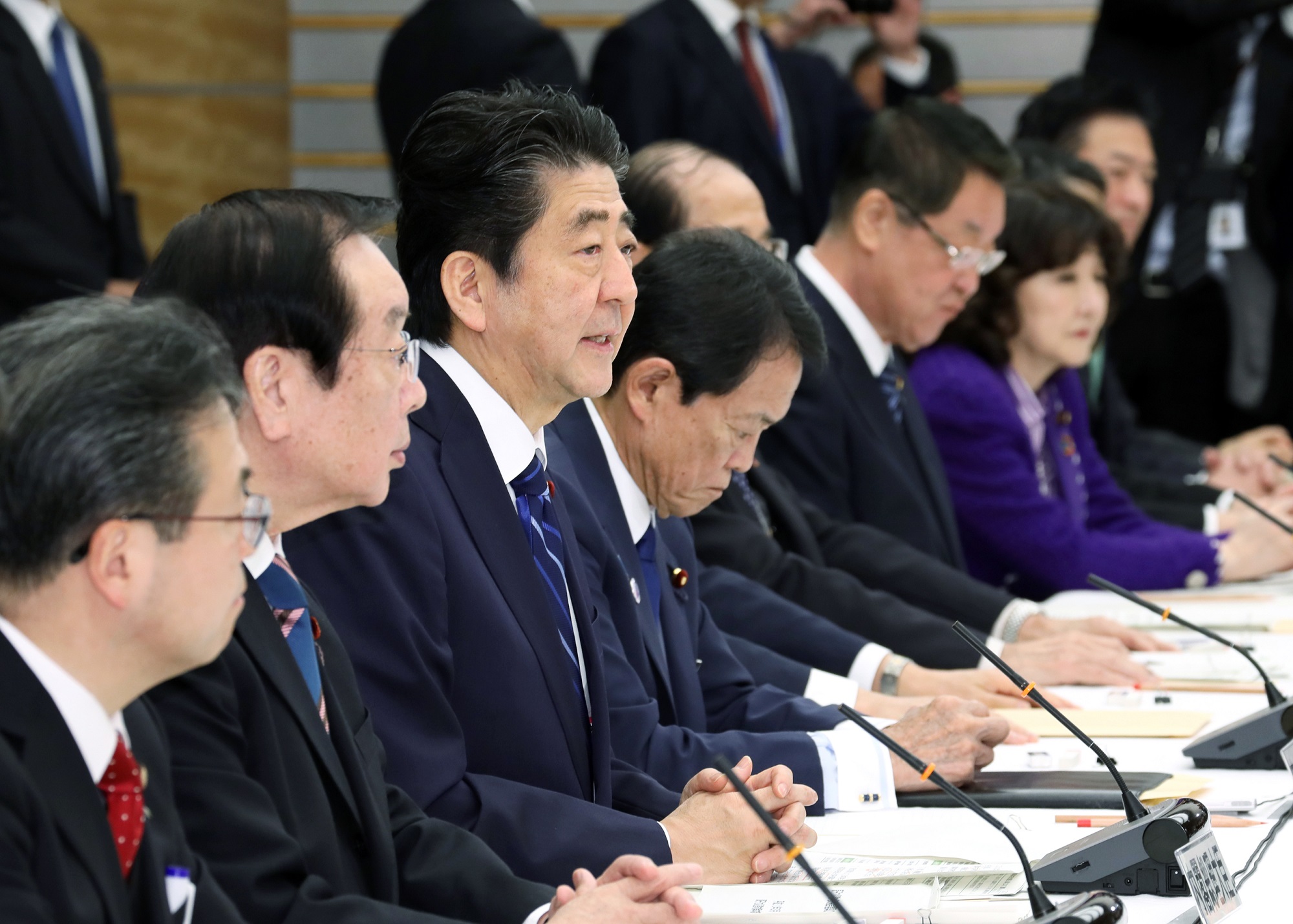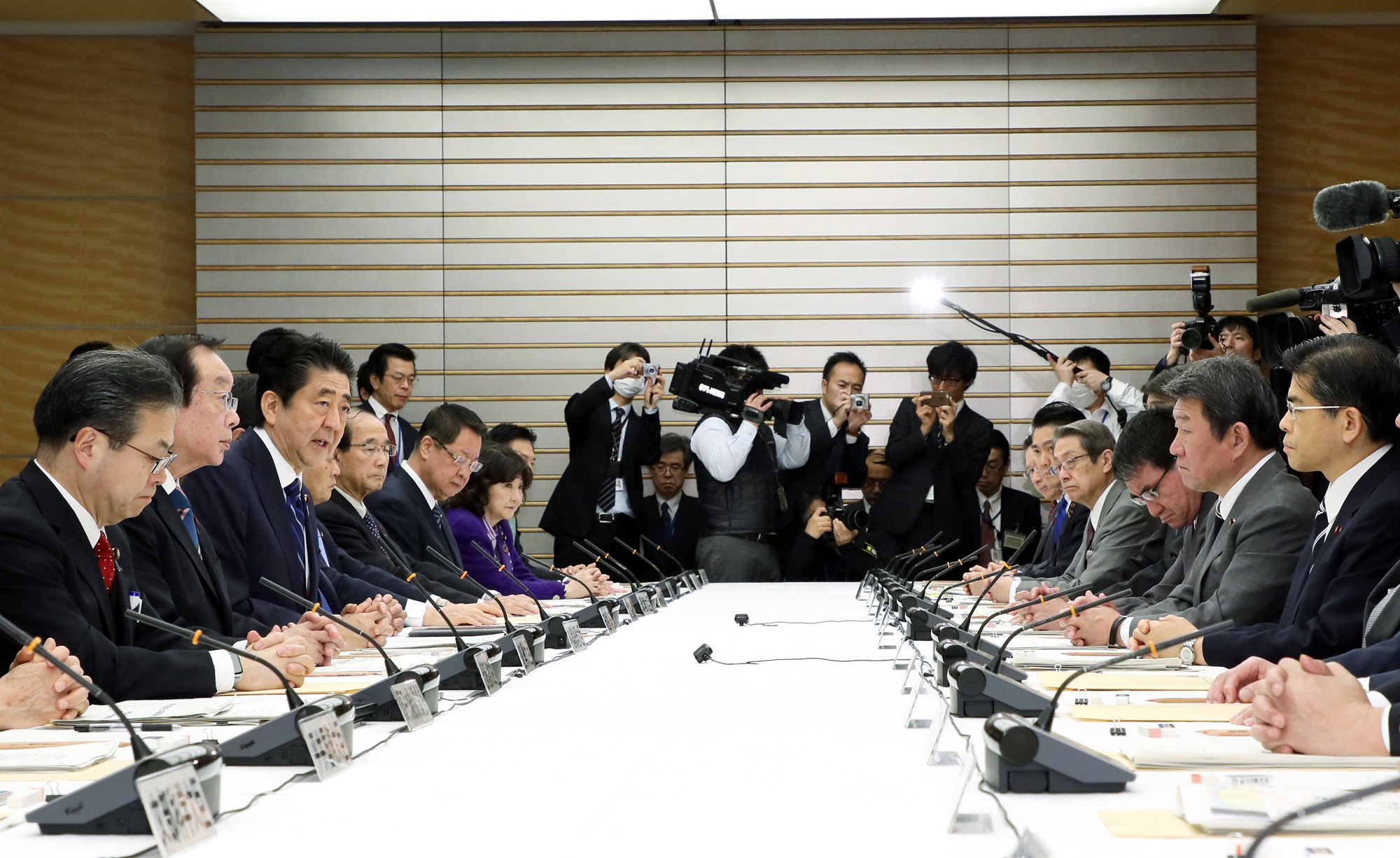Home > News > The Prime Minister in Action > March 2019 > Joint Meeting of the Reconstruction Promotion Council and the Nuclear Emergency Response Headquarters
The Prime Minister in Action
Joint Meeting of the Reconstruction Promotion Council and the Nuclear Emergency Response Headquarters
March 8, 2019

Photograph of the Prime Minister making a statement

Photograph of the Prime Minister making a statement
[Provisional Translation]
On March 8, 2019, Prime Minister Shinzo Abe jointly held the 22nd meeting of the Reconstruction Promotion Council and the 48th meeting of the Nuclear Emergency Response Headquarters at the Prime Minister’s Office.
During the meeting, there was discussion on the current situation and issues in the eight years of reconstruction, progress on Fukushima’s reconstruction from the nuclear disaster, and the revision of the Basic Guidelines in Response to the Great East Japan Earthquake during the “Reconstruction and Revitalization Period.”
Based on the discussion in the meeting, the Prime Minister said,
“Reconstruction from the Great East Japan Earthquake is a top priority of the Cabinet. Almost ight years have passed since the disaster. We are entering a critical stage which paves a firm path towards the full-scale reconstruction of Fukushima, the wrap-up of our reconstruction efforts.
Thanks to the efforts that have been made so far, the reconstruction process is making steady progress. At the same time, the conditions surrounding the disaster-affected areas and people are diversifying in nature and our responses need a more tailored approach.
I request all the Cabinet members to exert your all-out efforts to complete full-scale reconstruction at the earliest possible date, over the course of the remaining two years of the reconstruction and revitalization period.
Meanwhile, even after the reconstruction and revitalization period ends, we must thoroughly work on the various tasks at hand such as maintaining psychological well-being of the people affected by the disaster. In addition, we need to work on the reconstruction and revitalization of Fukushima, which includes the decommissioning of the nuclear power plants and decontamination of water, with mid- to long-term perspectives, and the government needs to take the lead over these efforts.
In light of such circumstances, today, we reviewed the Basic Guidelines on Reconstruction, and outlined the direction of our reconstruction work after the reconstruction and revitalization period ends. I ask the Cabinet members to make the needed projects take shape following this direction, working with the Minister for Reconstruction.
In particular, with respect to the body which will succeed the Reconstruction Agency, I ask the Cabinet Minister to proceed with relevant foundational work towards the materialization of an organ which will act as a control tower, like the current agency, to eliminate government silos, and to achieve full-scale reconstruction from the Great East Japan Earthquake under the political responsibility and leadership.
There will be no revitalization of Japan without the reconstruction of Tohoku. We will listen to the voices of those affected by the disaster and incorporate them into the reconstruction process. I, myself, will visit Iwate Prefecture tomorrow. Our focus on local communities is the starting point of the Abe Cabinet. I request the Cabinet members to share the mindset of and work like a Minister for Reconstruction and exert all-out efforts to achieve full-scale reconstruction at the earliest date possible, paying close attention to the heart of those who are affected by the disaster.”


